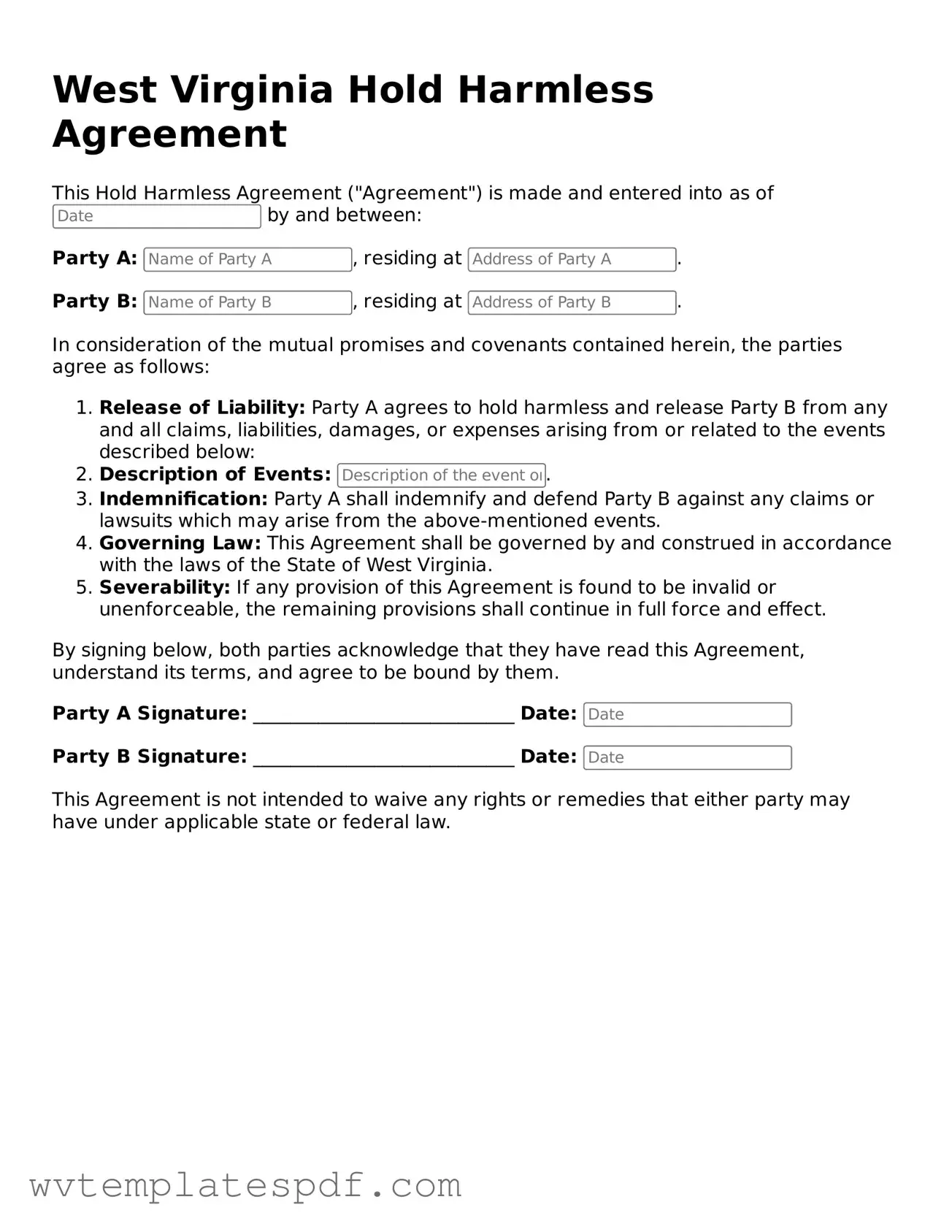When filling out the West Virginia Hold Harmless Agreement form, individuals often make several common mistakes that can lead to misunderstandings or legal complications. One frequent error is failing to read the entire document carefully. Many people skim through the agreement, missing crucial details that could impact their rights or responsibilities.
Another mistake is not providing complete and accurate information. Incomplete forms can result in delays or even rejection of the agreement. It's essential to ensure that all required fields are filled out correctly, including names, dates, and specific descriptions of the activities or events involved.
People sometimes overlook the importance of understanding the implications of the agreement. A Hold Harmless Agreement typically releases one party from liability for certain actions or events. Without a clear understanding of what this entails, individuals may inadvertently agree to terms that they do not fully comprehend.
Additionally, many individuals fail to seek legal advice before signing the agreement. Consulting with a legal professional can provide valuable insights and help clarify any confusing language. This step is especially important for those who are unsure about the legal consequences of the agreement.
Another common error is neglecting to review the agreement after it has been filled out. Changes or corrections may be necessary, and failing to do so can lead to enforceability issues. It is wise to double-check the document for accuracy and completeness before submission.
Some individuals also make the mistake of not considering the specific context of the agreement. The terms may vary significantly depending on the situation. Understanding the unique circumstances surrounding the agreement is crucial for ensuring that it meets the intended purpose.
Finally, people may forget to keep a copy of the signed agreement for their records. Having a copy can be invaluable if any disputes arise in the future. It is always a good practice to retain documentation related to any legal agreements.
